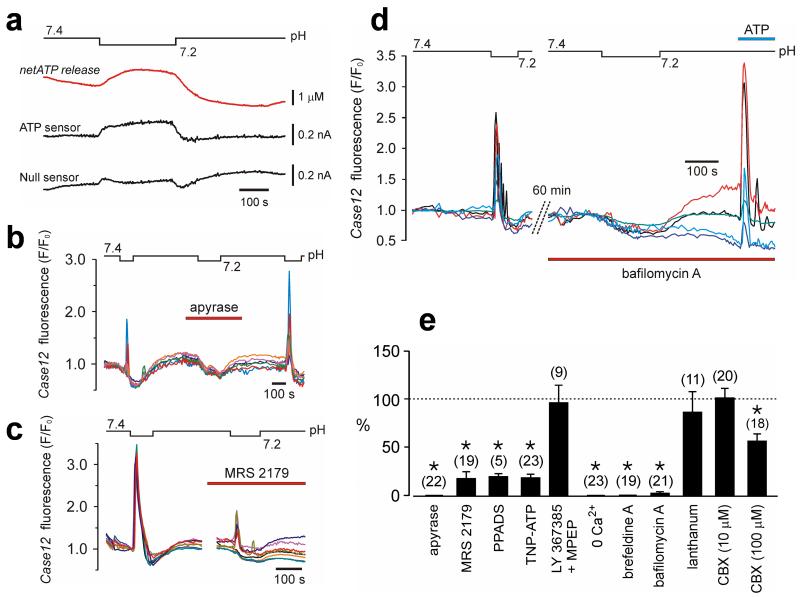Fig. 2. Exocytotic release of ATP propagates pH-induced Ca2+ excitation among VS astrocytes.
(a) A 0.2 unit decrease in pH induces sustained ATP release from the VS as detected with biosensors placed on the pia mater in horizontal slices prepared from adult rats. “net ATP” trace represents the difference in signal between ATP and null (control) sensor currents. (b) Apyrase abolishes pH-evoked [Ca2+]i responses in VS astrocytes. Traces illustrate the effects of apyrase on pH-induced changes in Case12 fluorescence of six individual astrocytes (adult rat slice preparation). Note the dip in fluorescence due to acidification-induced quenching of Case12 fluorescence. (c) The effect of MRS2179 on acidification-induced [Ca2+]i responses of eight individual VS astrocytes (organotypic brainstem slice). (d) Bafilomycin A abolishes pH-evoked Ca2+ excitation of VS astrocytes (five individual astrocytes in slice preparation of an adult rat). (e) The effects of apyrase, P2 receptor antagonists, mGlu1a and mGlu5 receptor antagonists (LY367385 and MPEP, 100 μM each), blockers of pannexin/connexin hemichannels and gap junctions – lanthanum (100 μM) and carbenoxolone (CBX), or inhibitors of exocytotic mechanisms on acidification-induced [Ca2+]i responses in VS astrocytes expressed as the percentage of the initial response. Numbers of individual astrocytes sampled from 3-5 separate experiments are given in brackets (*p < 0.05).

